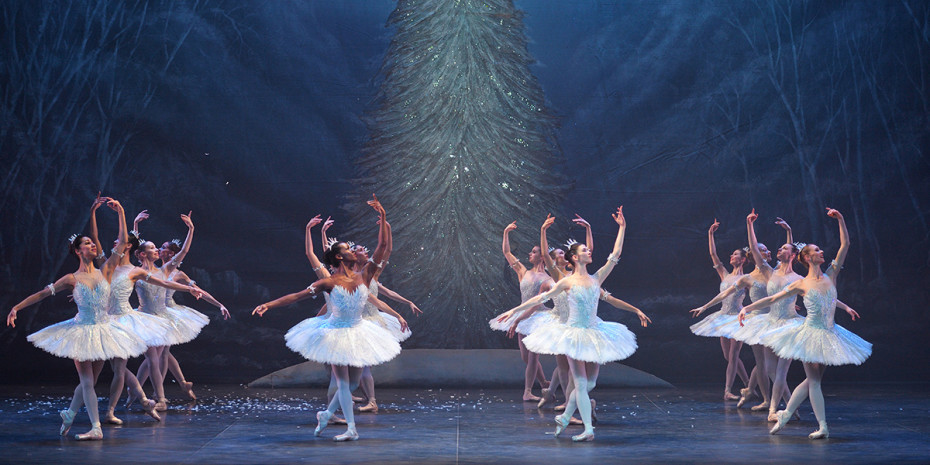This winter, the English National Ballet is putting on a programme of exquisite productions – just in time for both Christmas and that “be more cultured” New Year’s resolution. But before you book your tickets to see the sensational Nutcracker, Swan Lake or Manon at the London Coliseum, here’s a brief history of ballet in our fair capital.
Where it all began

We may now associate ballet with tights and tutus but it was quite a different artform when it first started in the 15th century. Originating in the Italian Renaissance courts, ballet was a celebration of dance at extravagant events held by Italian nobles. During these early days, ballet was a mixture of spoken word, music, dance and pantomime. They were often based on Greek and Roman myths and used to entertain the bored nobles. Costumes were detailed and heavy meaning movement was limited.
The spread of ballet
By the 17th century, it spread to the French courts thanks mostly to King Louis XIV who would often host and appear in ballets. King Louis also started the world’s first ballet company, the Ballet de l’Opéra de Paris, making him instrumental in the dance’s growth.
The form’s popularity grew even further in the 18th century when it spread through Europe. However, despite its rising popularity in other countries, it started to decline in France leaving countries like Denmark and Russia to develop it further.
By this time, stories about normal people and fairy tales were staged and a lighter costume donned allowing the performers more freedom of movement. And with the introduction of fairy tale stories, the concept of ballerinas and pointe-work started to form leading to the dance we know today.
The rebirth of ballet
In the late 19th century, many of the world’s favourite ballets were written including Tchaikovsky’s Swan Lake (1876) and The Nutcracker (1892). Serge Pavlovich Diaghilev and his company the Ballet Ruses travelled to Paris and reinvigorated Europe’s passion for the performance style in the early 20th century. Due to the Russian Revolution, the expats could not return back to their homeland so remained in Western Europe causing ballet’s popularity to spread once again.
Ballet’s re-introduction to London

Until then, ballet was a niche artform in the UK. However, in 1931 Ninette de Valois – a former dancer with Ballets Russes – founded Vic-Wells Company, the original iteration of what is now known as the Royal Ballet. By the mid-1930s, Ninette had recruited talented dancers and choreographers to join her company. This included Frederick Ashton, a choreographer whose works continue to exert influence on contemporary ballet. The high-calibre performances drew praise and audiences, though these audiences were limited to the upper-class.
During the war
The outbreak of WWII in 1939 inspired Ninette to embark on a tour of Great Britain. With the Vic-Wells Company’s male dancers drafted into military service, the repertoire was reworked to feature female dancers only. The tour meant the growing company could entertain war-weary Britons seven nights a week rather than the typical fortnightly runs typically performed in London.
The war years were spent touring Great Britain and Europe. They performed for a wide audience which included Allied troops. This fundamentally changed the public perception of ballet taking it from something foreign and inaccessible to part of national culture. It ultimately reshaped the artform as entertainment for everyone and created fans throughout the country.
Setting up home in Theatreland
After the war, the now popular ballet Company was ushered into the London theatre scene. They debuted at the Royal Opera House on 20 February 1946 with King George VI, his wife Queen Elizabeth, and the two princesses Elizabeth and Margaret in attendance. By 1956, Vic-Wells Company officially became the Royal Ballet.
The start of the English National Ballet

In 1950, following the success and popularity of the Royal Ballet and the general rise in national interest in the dance, ballet stars Alicia Markova and Anton Dolin, joined with Julian Braunsweg to create the Gala Performances Of Ballet. They then changed the company’s name to the Festival Ballet before changing it once again to London Festival Ballet which remained until June 1989.
At its heart, the company which eventually became the English National Ballet, was a touring company. It toured both England and overseas maintaining the presence and accessibility of ballet.
Growing Significance
In 1968, the Festival Ballet Company began performing at the London Coliseum, home to the English Nation Opera. In 1980, the London Festival Ballet became the first British classical ballet company to establish a formal outreach and education programme, culminating in the 1988 opening of the English National Ballet School. In 1989 they officially adopted the name English National Ballet.
Both the Royal Ballet and the English National Ballet still honour the traditions of classical ballet while continuing to innovate, bringing ballet to the widest possible audience both here with London shows and abroad.
If you’ve been inspired to experience one of the English National Ballet productions, visit the Nutcracker, Swan Lake and Manon pages.